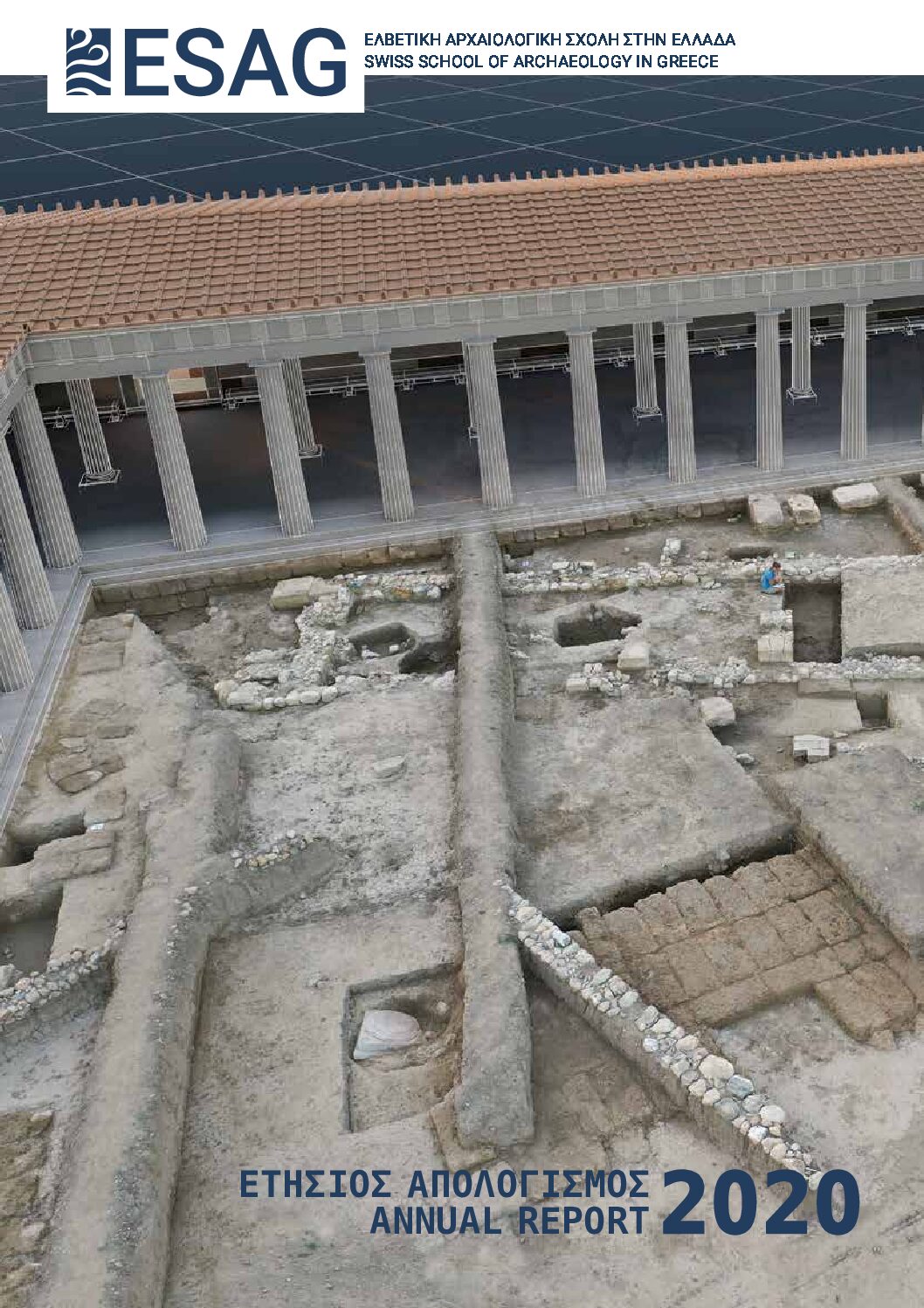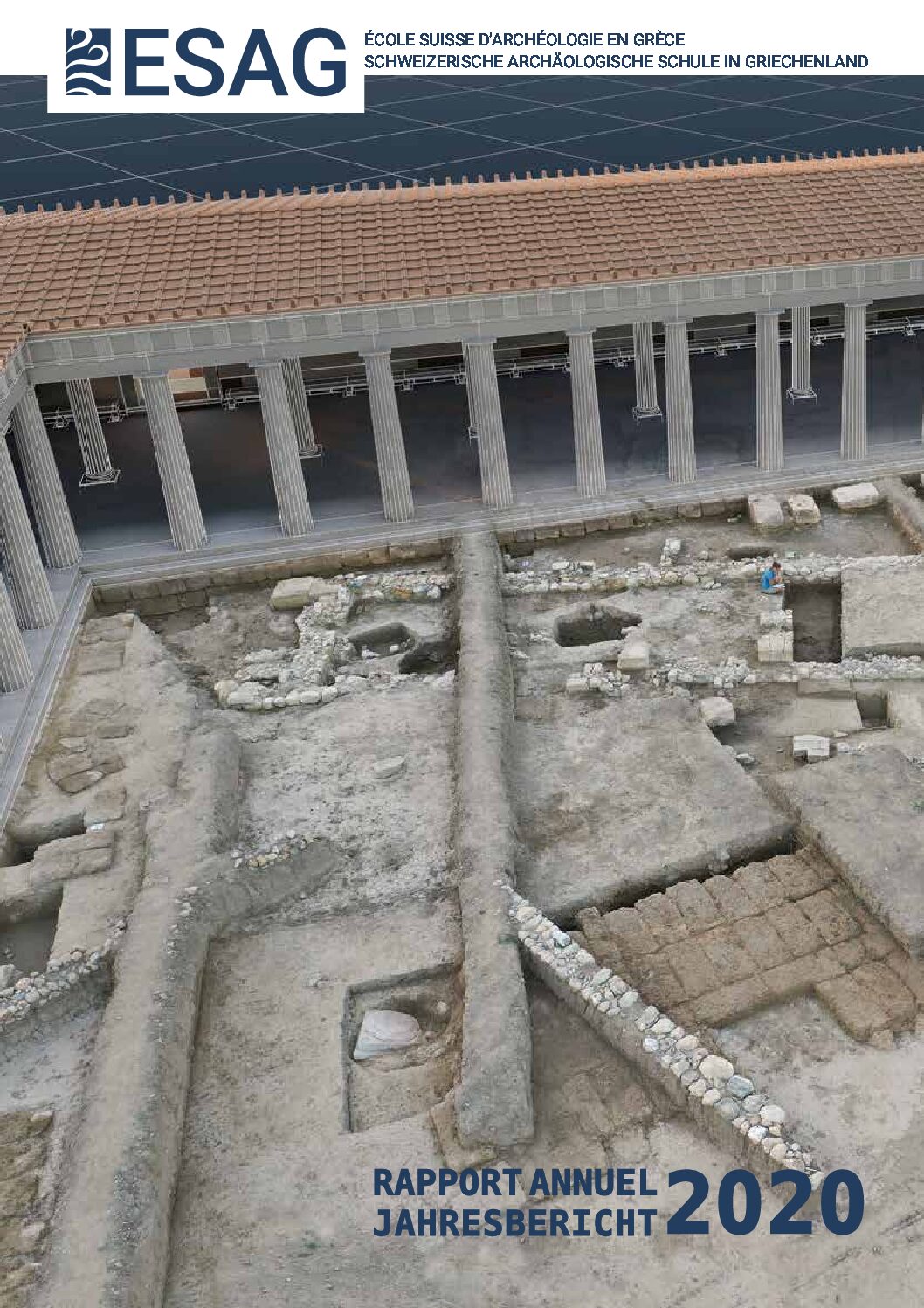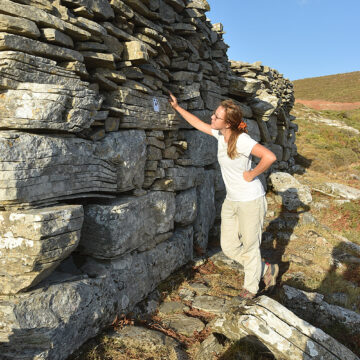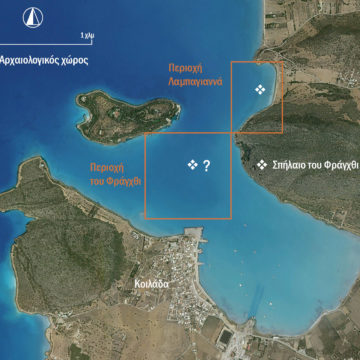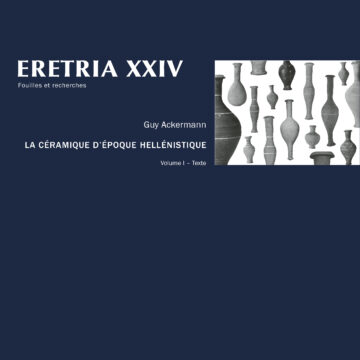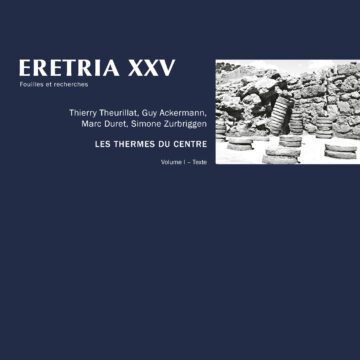Fieldwork 2020
Excavations in the Artemision of Amarynthos (Euboea)
The four-year SNSF research program in the Artemision of Amarynthos (2017–2021) is coming to an end. At the instigation of D. Knoepfler, the exploration carried out at the foot of the Paleoekklisies hill uncovered monumental remains in 2007. Ten years later, these remains were identified with the sanctuary of Artemis Amarysia, thanks to inscriptions bearing the name of the goddess. The ongoing exploration of the site has brought to light a rich occupation history. The Mycenaean settlement on the hill was followed by the development of a shrine at the end of the 8th century BC. In its heyday during the Hellenistic period, the sanctuary was organized around a large quadrangular courtyard delimited by porticoes and smaller religious buildings. The most impressive discovery to date is an elongated two-aisled ‘π’-shaped stoa about 70 m in length. The stoa was directly facing a temple with an altar. The sanctuary seems to have suffered significant destruction during the 1st century BC. Buildings were restored, and a sacred fountain was built in the 2nd century AD. Early Christian burials testify to the enduring significance of the site, which was probably dismantled towards the end of Antiquity.
The sanctuary of Artemis up to the Archaic period
Exploration of the deepest strata and issues related to the origin of the cult are a main focus of the project in Amarynthos. The earliest evidence of religious activities in the Artemision are ritual vases and votive objects dated the 8th century BC. An elongated edifice with propylaia and a first temple were built towards the end of the 7th century BC. At the end of the Archaic period the temple was reconstructed, and a rich deposit of offerings buried under the floor. The content of the deposit gives an idea of the variety of votive objects offered to Artemis in her sanctuary during that period.
Stoa and oikoi: the monumental limits of the Artemision
The Artemision is bordered by porticoes to the north and east. Discovered in 2007, the remains of the eastern portico have been entirely excavated within the extent of the excavation site. It is a 70 m long monumental building with twenty-seven Doric columns on the facade. Three small oikoi were identified in 2020 between the eastern and northern porticoes where the sanctuary’s main entrance was assumed to be located. In the 2nd century BC, an esplanade was built to the east, bordered by a large retaining wall against the hill; the excavation of the whole structure was achieved this year.
The contribution of inscriptions from Amarynthos
Until 2016, the excavations at Amarynthos yielded few and highly fragmented epigraphic finds. During the last four seasons, however, several important documents have been discovered. Stamped tiles bearing the name of Artemis and statue bases dedicated to the triad of Artemis, Apollo and Leto have brought conclusive evidence about the identification of the sanctuary. Two longer inscriptions were also recovered from the Roman fountain: a Treaty of sympoliteia between Eretria and Styra, the oldest text of its kind, and an honorary decree for five military officials. Of particular interest is also the statue base for the hitherto unknown nymph Archo, which provides a new contribution to the local mythology, which is poorly known.
Excavation at the “Dragon house” of Ilkizes (Euboea)
The ongoing project at Ilkizes near Styra focuses on a particular type of dry-stone rural buildings located in the mountain range of Southern Euboea, the so-called drakospita or “dragon houses. Although their monumental architecture has long aroused the archaeologists’ curiosity, their origin, date, and functions still remain enigmatic. Are they cult sites, observatories, watchtowers, quarry houses, or simple sheepfolds? The exploration of the dragon house of Ilkizes will hopefully provide answers to our understanding of these buildings.
Underwater excavation at Kiladha (Argolid)
In 2020, the Greek-Swiss team continued exploring the submerged prehistoric landscape of the Bay of Kiladha (Argolis). In the sector of Lambayanna, further survey work was carried out at the Early Bronze Age settlement that is today under water. The numerous finds, in particular pottery fragments and stone tools, were studied in Athens, where the excavation material is stored. Another focus of the project is the communication of scientific research to a broad audience through workshops and guided tours.
ERETRIA XXIV
Since 1964, Swiss archaeologists excavate and study ancient Eretria (Euboea island). The ERETRIA series present the final results of the main excavations and discoveries of the Swiss School of Archaeology in Greece.
ERETRIA XXIV by Guy Ackermann presents an up-to-date overview of the Hellenistic pottery discovered in Eretria, based on 48 closed contexts dated to the end of the 4th to the middle of the 1srt century BC. The comparative study of local vs imported productions serves as a basis for analysing the economy of Eretria, between self-sufficiency and integration into the commercial exchange networks. A reviewed chronology of closed contexts (destruction layers, filling of wells and pits, monetary treasures) allows the author to propose a new history of the city and its progressive decline.
ERETRIA XXIVERETRIA XXV
ERETRIA XXV is the last volume released. It presents the study of Roman baths excavated by the Swiss School of Archaeology in Greece between 2009 and 2014 in Eretria (Euboea, Greece). Built shortly after the middle of the 2nd century AD at the center of the ancient city, these small-scale thermae conform to the traditional layout and include the characteristic rooms of the Roman bathhouses of the Imperial period. Several nearby kilns were used to produce lime for the construction of the baths. Converted into a rubbish dump after they were taken out of service, they yielded a rich assemblage related to the use of the baths. The abandonment of the bathing building took place shortly after the middle of the 3rd century AD, as evidenced by a treasure of 201 Antoninians hidden in the sewer of the baths. The book concludes with a discussion on the Imperial period in Eretria, bathing practices and their evolution as well as thermal baths in Greece.
ERETRIA XXV